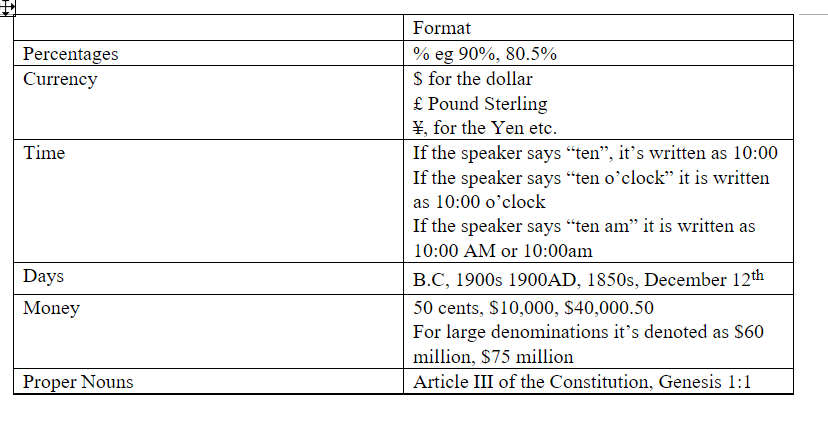This style guide is our way of ensuring quality and explains what you as an oral historian should expect when it comes to transcript quality. Here’s a summary of the style guide we use at JoFranLu.
Transcription Types
Verbatim: This type of transcript includes filler words, stutters and repetition. As well as non-verbal cues. It basically includes 100% transcription of the entire audio recording word for word.
Non-verbatim: This type of transcript is lightly edited for readability without altering the meaning of the document. Filler words are excluded as well as most non-verbal cues.

Notational Tags
At JoFranLu we use a couple of different notation tags to denote differently. They are denoted as this [notational tag 00:00:00] the digits represent the time, starting from left to right, with the Hour, Minute and Second that the tag was identified with opening and closing square brackets. Eg [Notational Tag 01:55:30] so the tag was captured at 1 hour, 55 minutes 30 seconds into the audio.
The different notational tags include
Inaudible [inaudible 00:00:00]
This tag is used when unintelligible or inaudible word(s) are spoken. This may happen due to difficult audio quality, or a sound (external noises) obscuring the main speaker.
Crosstalk [crosstalk 00:00:00]
Sometimes when multiple speakers are speaking, they end up talking over each other making it hard to hear what each is saying. This is where a crosstalk tag comes in showing that the speakers are becoming unintelligible.
Foreign Language [Foreign language 00:00:00]
For any non-English portions of audio, we indicate where they begin with a timestamp and either the name of the language (if known) or simply “foreign language”
Phonetic Tags [Phonetic Spelling 00:00:00]
Sometimes as transcribers we may be unable to research a definitive spelling of a proper noun or industry terminology. In this case we include the attempted spelling with a timestamp ensuring uniform spelling of the same word throughout the transcript.
Speaker Labels
We make reasonable efforts to distinguish speaker labels especially if there are multiple speakers. We use the speaker labels below to identify speakers in a transcript.
Speaker name
If the speaker is identified in the audio and can clearly be inferred or if they introduce themselves by their names, their names are used. Eg
John:
Speaker plus number
If the speaker names are not provided, we use numbers and allocate them to the speakers in the audio. Speaker 1:, Speaker 2:
Title
If the speaker names are not provided but their professional titles are given, their titles will stand as their labels. For example, Doctor, Professor, Teacher.
Group Labels
When there are too many speakers to keep track of each speaker and who says what, group labels are used. Eg Student, Camera Crew.
Symbols and Numbers
For numbers under 10 we write them in word format eg seven, six, five. Anything above 10 is written in digit format eg 17, 1007. However, for readability purposes if a single digit is followed by non single digit then a digit format is used for example 9, 8 20, 25 etc. Below is a table that shows how we denote symbols and other forms of numbers.

Punctuation
Hyphens
Hyphens are used in the following ways.
To indicate that a speaker is spelling out a word. eg Y-E-S
These are used to indicate an abrupt interruption.
They are also used to indicate a stutter.
Below is an example of all the above uses of a hyphen.
Speaker 1: L-A-M-E
Speaker 2: What is lame?
Speaker 1: That Lucy-
Speaker 2: I thought that didn’t matter to you.
Speaker 1:… didn’t- di-didn’t listen to me
I do hope this gives you a clear summary of what to expect in your transcripts. We are, however, always open to creating a bespoke transcription guide that matches your needs. Please contact us for any questions or clarifications or comments.
Kindly consider us for any of your oral history transcription needs and remember, always be kind try to stay positive and learn to unwind.
